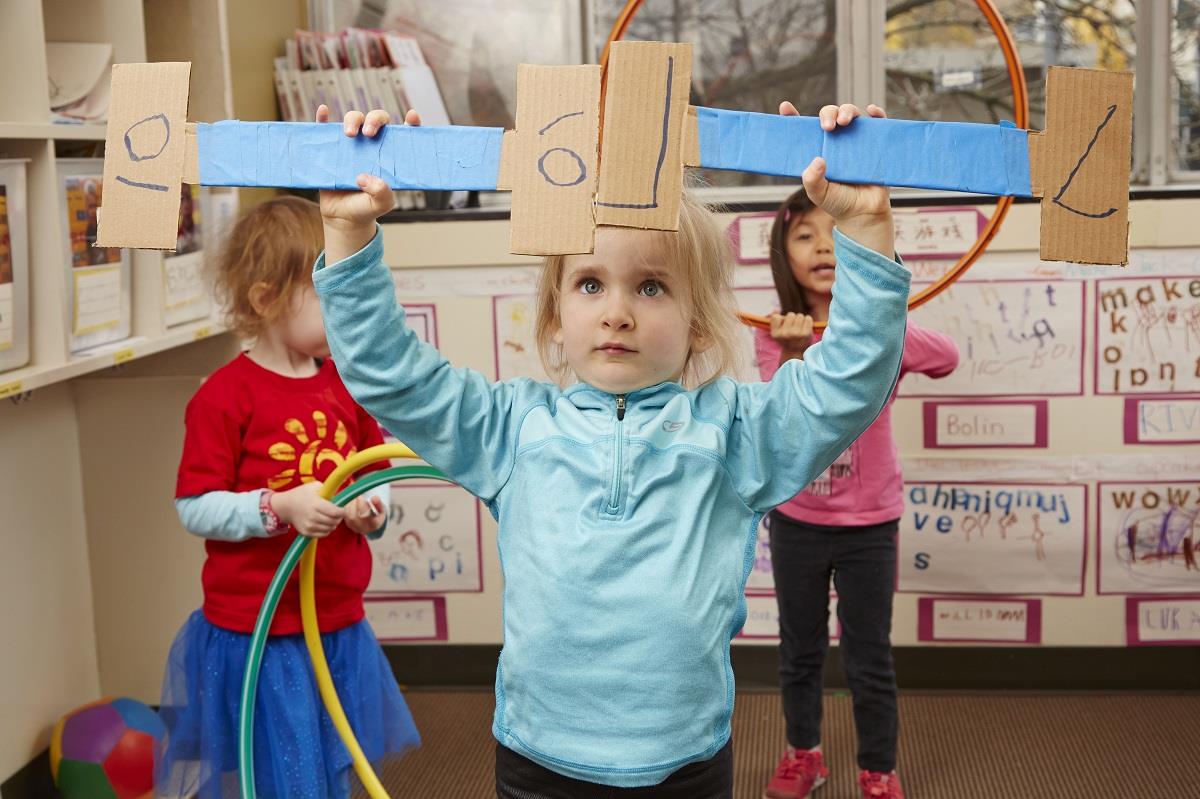It's the World's Strongest Kid! Build a Playful Gym for Pretending

It’s January, a time of year when folks head to the gym in the name of good health. But healthy habits start at home, and you can get some seriously fun movement going in your very own living room by making a “home gym” that your kids will love.
If you’d like to get extra crafty, you can even make some pretend dumbbells or barbells out of cardboard. There’s nothing like deadlifting one million pounds to pump you up!

Materials & Preparation
- Balls
- Small Hula-Hoops
- Cardboard, scissors, painters tape, and pens to make faux dumbbells and barbells
- Music
- Possible additions: Jump ropes, yoga mats, large foam blocks, plastic water bottles filled with water or sand, etc.
Make your fitness equipment:
If you’d like to include cardboard dumbbells or barbells in your home gym, cut out a dumbbell shape from flat piece of cardboard, and then wrap the bars with painters tape to make a colorful grip. Kids love helping with the tape and, if yours are old enough, they can also practice writing numbers on the cardboard to represent the weight. Is one million pounds too much for your little angel to lift? Write it down and test it out!

Set the fitness center scene:
Simply lay out the items you’ll be using on the floor and crank up the tunes! Ask your child how he could exercise with each item and let him explore. Perhaps he’ll invent a Hula-Hoop game, or make a balance beam by laying a jump rope on the floor. You can talk about how these objects might be used in a real gym—for instance, the blocks could be used for a “step-workout class;” an exercise mat might become a stretching area. Invite your child to lead a yoga class or work up a sweat together doing kid-inspired Zumba!

Gym Learning:
Movement helps children develop strength, balance, and coordination, but did you know that movement sequences can also build problem-solving skills? Here’s how it works: When your child is imitating her big sister, aka “Zumba-instructor”, she is exercising her body and her memory. She remembers and follows a simple series of steps: jump, raise your hands in the air, dance! She will use that same memory skill when she’s tackling bigger challenges, like learning to tie her shoes.




